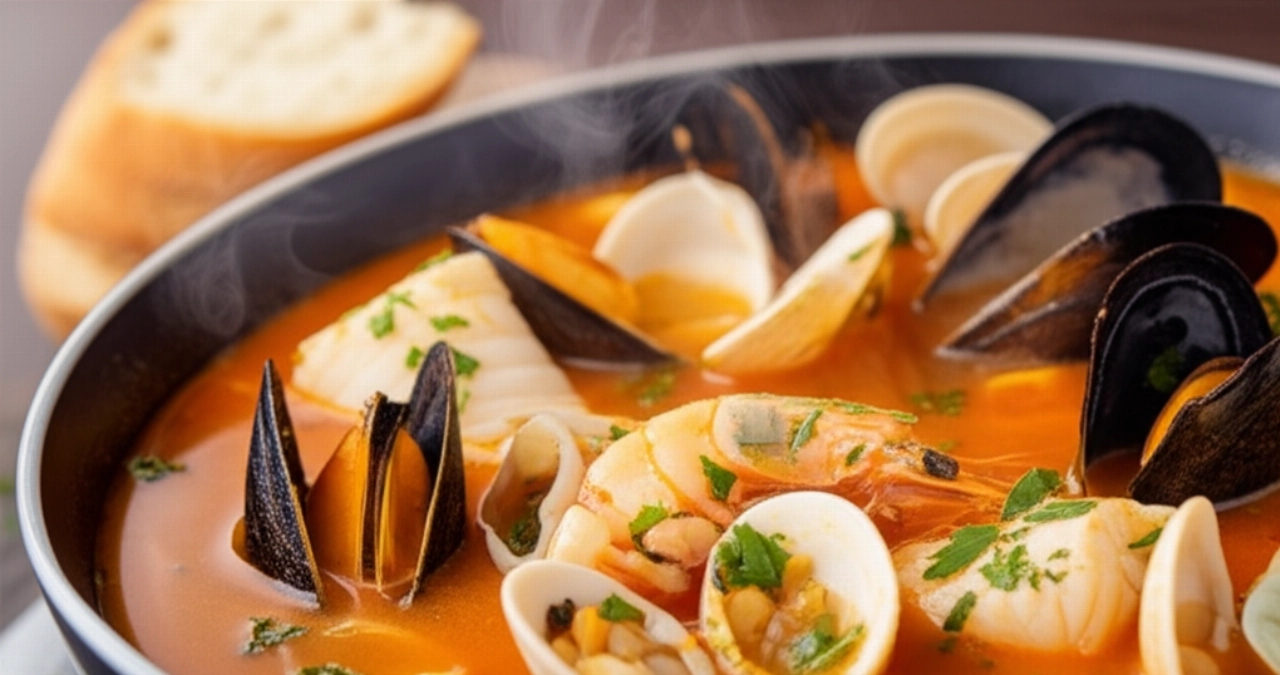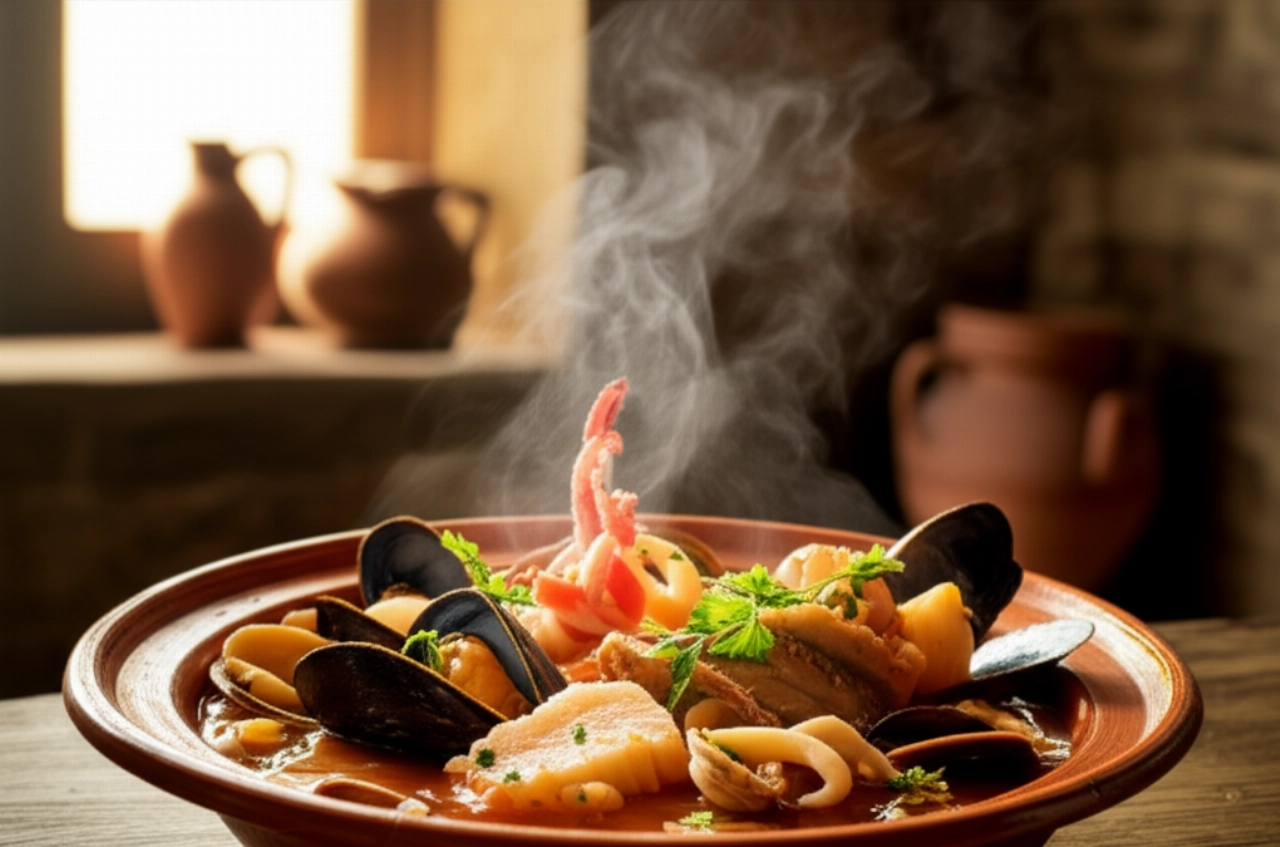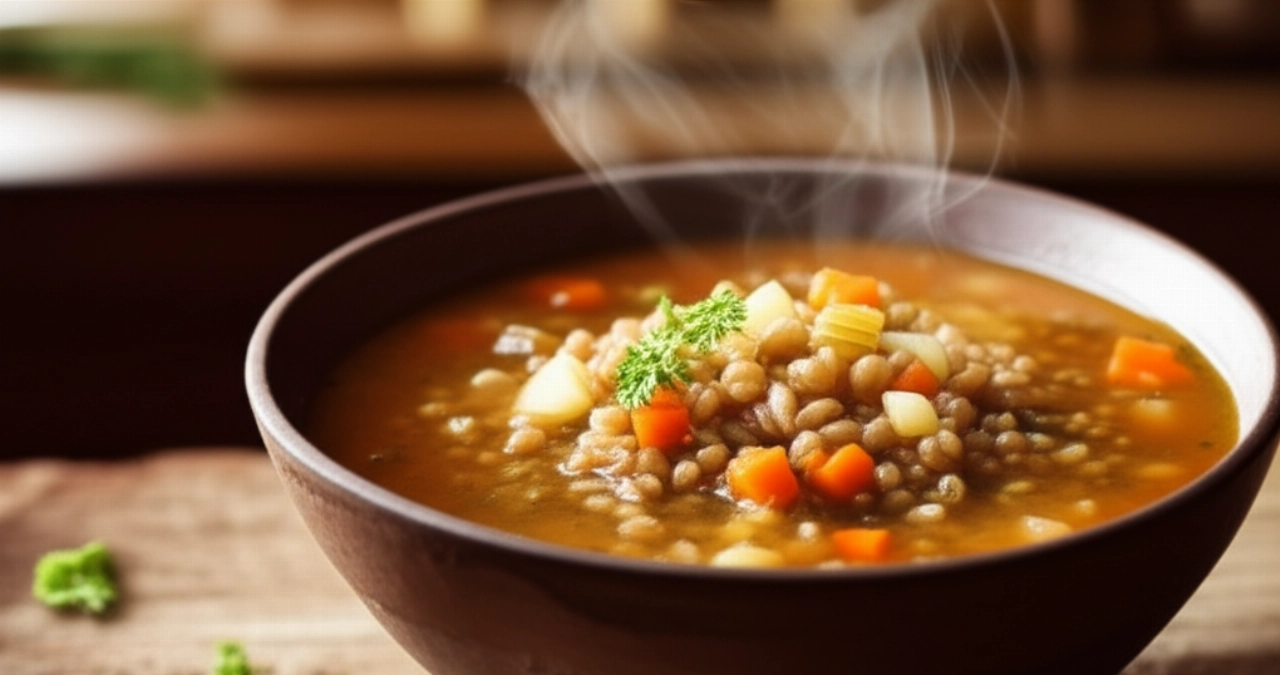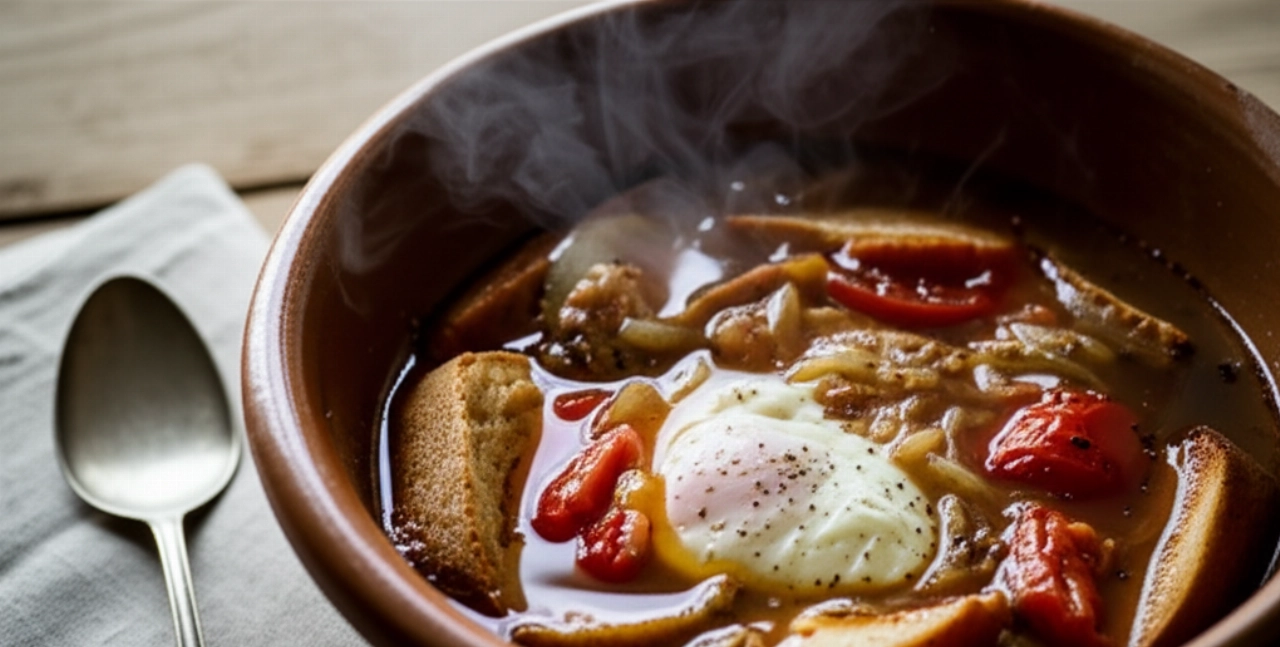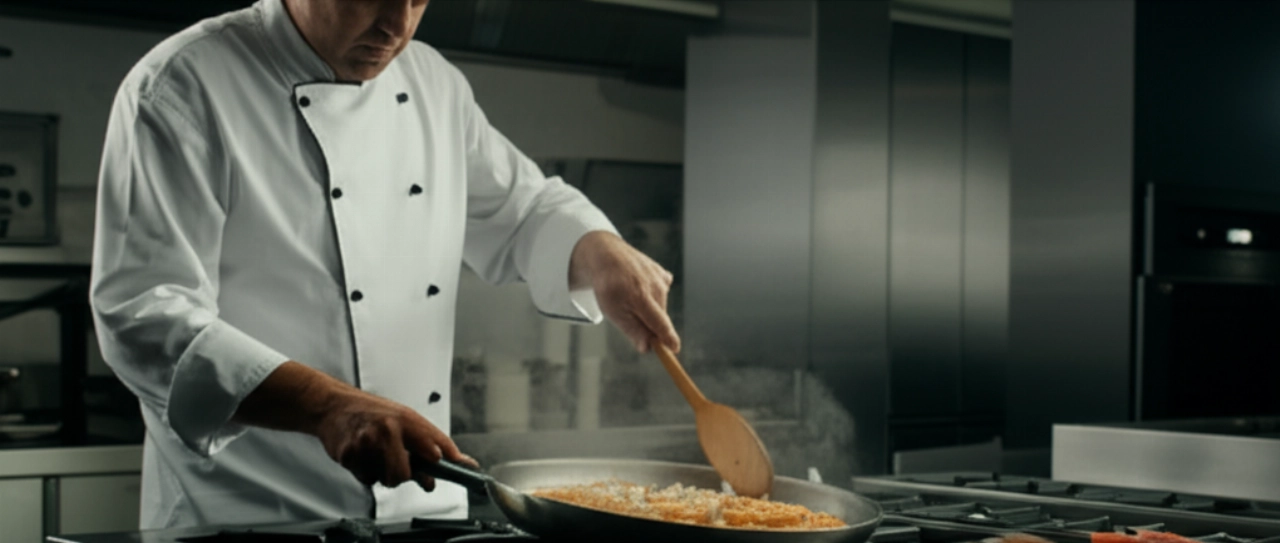Dreaming of bringing to the table a dish that smells of the sea, tradition, and fishermen's stories? A brodetto so rich and flavorful it makes you feel on the Adriatic coast, even if you're miles away? Anconetana-style Brodetto is not just a fish soup; it's a sensory experience, a warm embrace that encapsulates the soul of Marche.
But let's be honest, the idea of preparing a fish soup can be daunting. Too many types of fish, fear of overcooking or undercooking them, the worry of a bland or, conversely, too strong a broth. And what if it doesn't taste authentic? If the result isn't what you expect, wasted time and ingredients are just around the corner.
Make yourself comfortable. On this page, you won't just find a list of ingredients, but the definitive guide, full of tricks and tips, to prepare the most delicious and authentic Anconetana-style Brodetto you've ever tasted. I'll guide you step by step to achieve a rich, balanced, and intoxicatingly fragrant fish soup, with perfectly cooked fish and a broth that is pure poetry. Success is guaranteed!
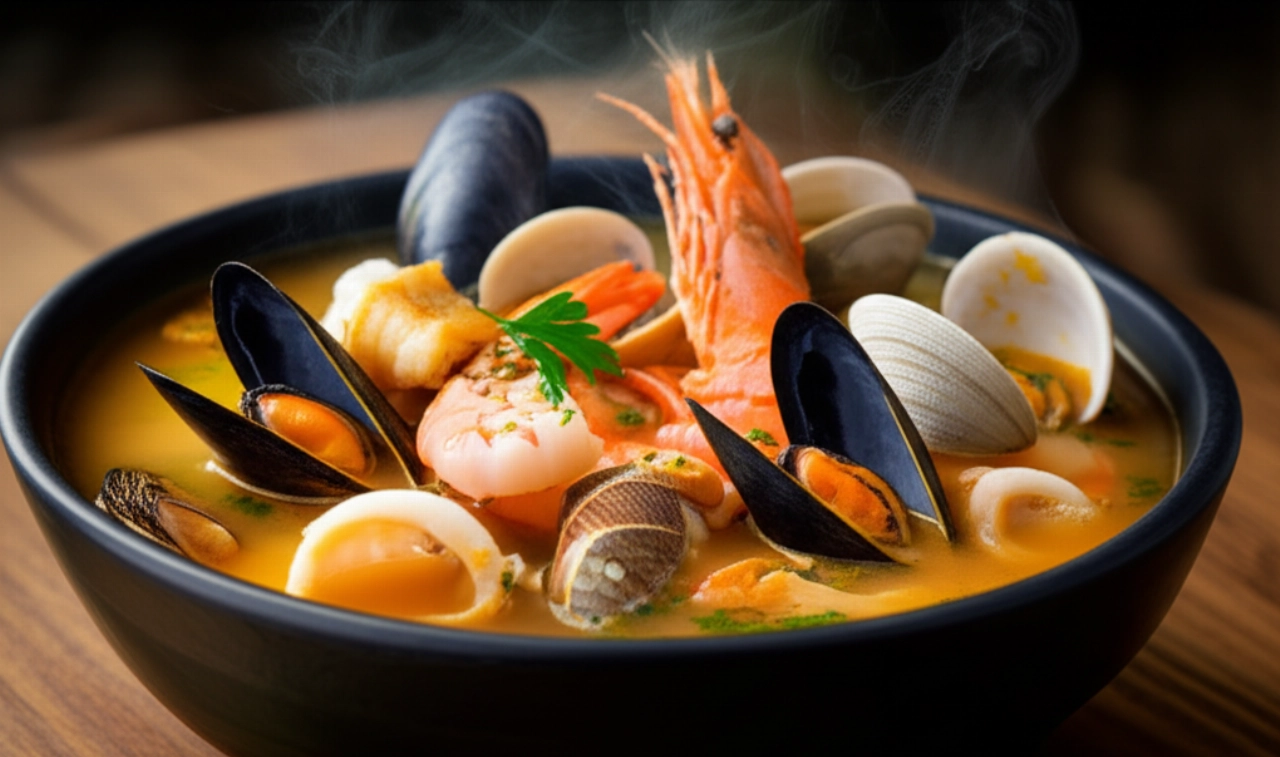
Smart Ingredients for a Masterful Brodetto
The secret to an exceptional brodetto begins with the choice of ingredients. It's not just about quantity, but quality and understanding the role of each element. Here's what you'll need and why:
- The Freshest Fish (at least 7-8 different types): This is the true soul of the brodetto. Anconetana tradition calls for a mix of rock and bottom fish, crustaceans, and mollusks. Don't be afraid to ask your trusted fishmonger!
- Fish for broth (more resistant): Scorpionfish, John Dory, Weever, Smooth-hound, Monkfish. These will give structure and flavor to the broth.
- Delicate fish (to add last): Red Mullet, Cod, Mackerel, Ray. They cook quickly and maintain their texture.
- Mollusks and Crustaceans: Mussels, Clams (already purged!), Shrimp, Scampi. They add sweetness and complexity.
Grandma's tip: The total amount of fish should be about 1.5 kg for 4 people. Don't skimp on variety; it's what creates the symphony of flavors!
- Tomatoes: 400g of excellent quality peeled tomatoes (or thick passata) and one tablespoon of concentrate. The tomato should color and give body, without overpowering the fish flavor.
- White Wine Vinegar: 1/2 glass. It's the "secret" ingredient that balances flavors, cuts through richness, and gives that typical sweet and sour note of Anconetana brodetto. Don't be afraid, you won't taste pure vinegar, but a surprising freshness!
- Extra Virgin Olive Oil: Generous amount, good quality. It's the base of the soffritto and the vehicle for flavors.
- Garlic: 2-3 cloves. For an aromatic soffritto.
- Fresh Parsley: A nice bunch, finely chopped. To add at the end for freshness and color.
- Chili Pepper: To taste, for a touch of liveliness.
- Salt and Black Pepper: To taste.
- Homemade Bread: Toasted or fried slices, to accompany and "mop up" the broth.
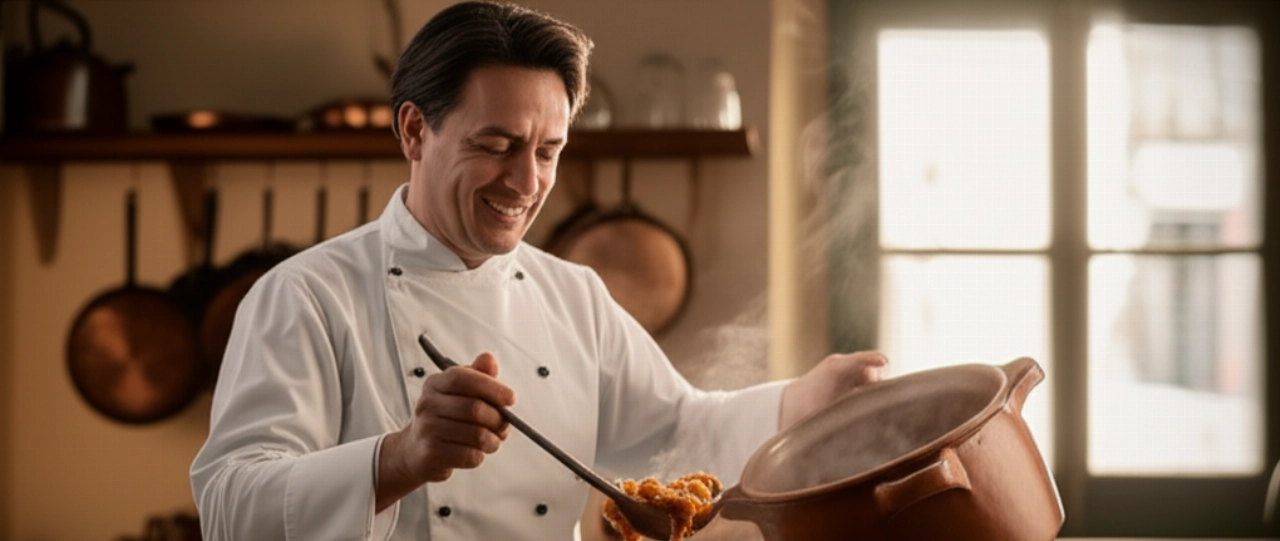
The 3 Mistakes That Ruin Brodetto (and How to Avoid Them)
Preparing a perfect brodetto isn't difficult, but there are some pitfalls that can compromise the result. Here's how to avoid them, based on my experience:
- Choosing the Wrong or Unfresh Fish: Brodetto lives and dies by the quality of its fish. Don't use frozen fish if you can avoid it, and make sure it's super fresh. A good fishmonger is your best friend. Don't limit yourself to just a few types; variety is crucial for flavor complexity.
- Overcooking the Fish: This is the most common mistake! Fish, especially the more delicate types, becomes rubbery and falls apart if cooked too long. Add the fish according to their cooking times, from the most resistant to the most tender.
- Not Balancing the Acidity: White vinegar is a distinctive element of Anconetana brodetto. Not adding it or using too little means losing that bright note that "wakes up" all the flavors. Conversely, overdoing it would make it too acidic. Follow the doses and taste!

The Extra Touch: The Secret of Ancona Fishermen
My grandmother, who was from Ancona and knew every secret of the sea, always said: "Brodetto isn't just fish and tomato; it's patience and respect for the ingredients." Her true secret, known to few, was in the initial soffritto and the order of adding the fish.
She always started with a slow and patient soffritto of garlic and chili pepper in good oil, almost "perfuming" the oil before everything else. And then, the addition of vinegar: she didn't let it evaporate completely, but let it "be felt" a bit, because, she said, "it's what cleanses the palate and makes you appreciate every flavor of the sea." This small detail makes a huge difference, believe me.
Let's Prepare Anconetana-style Brodetto Together: The Step-by-Step Guide
Fish Preparation:
- Clean the fish: Gut and scale all the fish. Cut larger ones into pieces. For mollusks, ensure mussels and clams are well purged. Shrimp and scampi can be left whole or deveined.
- Prepare fish stock from scraps (optional but recommended): If you have fish heads and bones that aren't too bitter, you can make a quick stock with water, celery, and carrot. It will give a deeper flavor. Otherwise, we'll use hot water.
Cooking the Brodetto:
- The Magic Soffritto: In a large saucepan (traditionally earthenware, but a thick-bottomed pot also works), heat a generous amount of extra virgin olive oil. Add the whole garlic cloves (or chopped, if you prefer) and the chili pepper. Sauté slowly until the garlic is golden and very fragrant. Don't burn it!
- The Vinegar Touch: Remove the garlic. Pour in the white wine vinegar and let it reduce for a couple of minutes, scraping the bottom of the pot to gather all the flavors (this is the "deglazing" we love so much!).
- The Tomato: Add the peeled tomatoes (crush them with a fork) and the concentrate. Mix well and let it cook over medium-low heat for about 10-15 minutes, until the sauce has thickened slightly and changed color, becoming more intense.
- The Water (or Stock): Pour in about 500 ml of hot water (or the fish stock prepared earlier). Bring to a boil, then lower the heat and let it simmer for another 10 minutes. Season with salt and pepper.
- Adding the Fish (in layers): This is the crucial step for perfectly cooked fish.
- First, add the more resistant and larger fish (scorpionfish, smooth-hound, monkfish, John Dory). Let them cook for 5-7 minutes.
- Then, add the medium-cooking fish (red mullet, cod, ray). Continue cooking for another 3-4 minutes.
- Finally, add the mollusks (mussels and clams, which will open in a few minutes) and crustaceans (shrimp, scampi). Let them cook for the last 2-3 minutes, until the mollusks have opened and the crustaceans are pink.
Important: Do not stir too vigorously to avoid breaking up the fish. You can gently shake the pot.
- The Final Touch: Turn off the heat. Add the finely chopped fresh parsley. Cover the pot and let it rest for 5 minutes. This will allow the flavors to meld and the fish to finish cooking gently.
Serving:
Serve the Anconetana-style Brodetto piping hot, accompanied by slices of toasted or lightly fried homemade bread. Each diner can choose their favorite pieces of fish and dip the bread into the flavorful broth. "Scarpetta" (mopping up the sauce with bread) is a must!
Tips and Frequently Asked Questions about Anconetana-style Brodetto
I know you might still have some doubts. Here are the answers to the most common questions, to clear up any uncertainty:
- What fish can I use if I can't find all the recommended types?
Variety is key! Try to have at least 5-6 different types, balancing fish for broth (like scorpionfish, smooth-hound) with more delicate fish (red mullet, cod) and always adding mollusks and crustaceans. Ask your fishmonger for advice on the catch of the day.
- Can I prepare the brodetto in advance?
Yes, but with a clarification. You can prepare the base broth with the soffritto and tomato even the day before. The fish, however, is best added just before serving, to prevent it from falling apart or becoming rubbery. Heat the broth and then add the fish according to the cooking times.
- How can I store leftover brodetto?
You can store it in the refrigerator in an airtight container for 1-2 days. Reheat it gently over low heat. Keep in mind that the fish might lose some texture.
- Why is my brodetto too watery/thick?
If it's too watery, you probably added too much water or didn't let the tomato thicken enough. If it's too thick, you can add a little hot water or fish stock when serving.
- Can I freeze the brodetto?
Yes, you can freeze the broth without the fish. Once thawed, bring it to a boil and add fresh fish to complete the cooking. Freezing the ready-made brodetto with the fish is not ideal, as the fish tends to lose texture and flavor.
There you have it! Now you no longer just have a recipe, but all the secrets to bring to the table a dish that tastes of the sea, tradition, and love. A true masterpiece of Marche cuisine that will win everyone over.
Don't be afraid to experiment. Cooking is an act of creativity and generosity. But start from this solid base and you'll see that applause won't be lacking. It will be a guaranteed success, just as if grandma were there with you lending a hand.
Have you tried our recipe? We're very curious to see your masterpiece! Leave a comment below, tell us how it went, or share a photo on Instagram by tagging @CercaRicette.it. If you loved this brodetto, you can't miss our recipe for Vincisgrassi, another symbol of Marche, or for a perfect side dish like Olive all'Ascolana.
